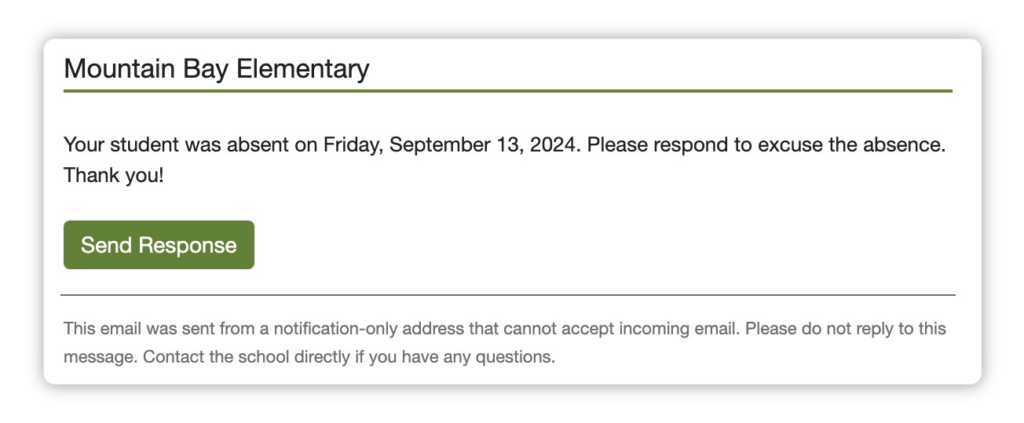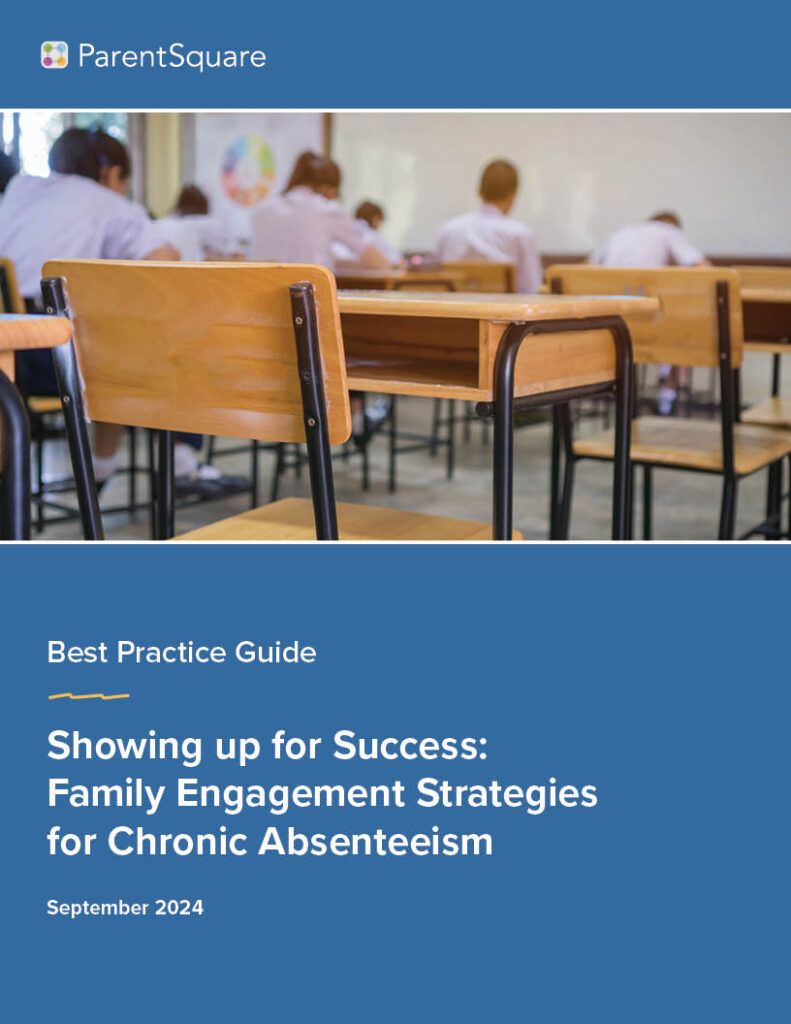Today, 1 in 4 students is chronically absent from school, meaning they miss at least 10 percent, or approximately 18 days, of the school year. And while 18 days might not seem like a huge deal, chronic absenteeism can have a ripple effect on a student’s life—affecting things like academic performance, personal relationships, and social-emotional health.

In the 2023-2024 school year alone, RAND and the Center on Reinventing Public Education estimated that 9.4 million students were chronically absent, putting them at higher risk for academic failure, poverty, and dropping out of high school.1
How can districts and schools address this complex and pervasive problem? While there’s no easy solution to chronic absenteeism, family engagement is one of the most effective ways to address it: The U.S. Department of Education encourages schools to improve family engagement in order to improve student engagement and attendance.2
Here are four ways districts and schools can use family engagement to effectively address chronic absenteeism.
1. Build strong relationships and a positive school culture
Research consistently shows that strong partnerships between home and school result in better academic outcomes, and students who feel connected to school are more likely to attend regularly and perform well academically.3 This makes it crucial for schools, administrators, and educators to build strong relationships with students and their families.
Another way to help strengthen how students feel about school by fostering a positive school culture. Students are more likely to feel welcome and engaged at schools with a supportive and inclusive school culture, which becomes an incentive for them to come to class every day.
2. Communicate consistently with families

Good school-to-home communication is central to addressing chronic absenteeism. Some parents don’t realize the cumulative impact of missing school days throughout the year, so it’s important to communicate the importance of attendance and clearly outline attendance policies at the beginning of the school year.
Families also need consistent communication to help them keep track of their student’s academic and attendance status—ideally through multiple channels for maximum visibility. When families are in the loop about absences and tardies, they’re better equipped to help address issues with attendance.
3. Partner with families to address absences early
The most common barriers to regular school attendance are related to health, transportation, food or housing insecurity, and misinformation.4 By building strong relationships, promoting a positive school culture, and using a unified school-home communication platform, schools can partner with families to improve students’ attendance.
Schools can also support families by sharing information about resources and services that can help them access what they need to help their child succeed. This doesn’t just benefit families and their wellbeing—it also creates systems of support for students who are most at risk for chronic absenteeism.
4. Manage chronic absenteeism with ParentSquare
Schools can use ParentSquare to work together with families to encourage more consistent attendance. For instance, ParentSquare makes it possible for all stakeholders to instantly receive a notification when a student is absent from school.
With ParentSquare’s Auto Notice feature, families can also receive important notices delivered to the device of their choice. Schools can set a custom threshold of absences that triggers an automatic notice to families, informing them about chronic absenteeism issues and opening a line of communication to problem-solve.

With the right communication and engagement tools, schools can effectively address chronic absenteeism
To help district leaders and educators proactively address this issue, we developed a new guide titled “Showing up for Success: Family Engagement Strategies for Chronic Absenteeism.” The guide outlines actionable tactics schools can take, from preventing chronic absenteeism to managing it when it happens.
“Showing up for Success: Family Engagement Strategies for Chronic Absenteeism.”

Sources:
1. Are chronic absenteeism interventions working?
(Arundel, 2024)
2. Family Engagement to Support Student Engagement and Attendance
(U.S. Department of Education in partnership with Carnegie Corporation of New York and Overdeck Family Foundation, 2023)
3. ‘A Universal Prevention Measure’ That Boosts Attendance and Improves Behavior
(Stone, 2024)
4. Breaking Down Barriers to Student Attendance
(Gabenski, 2024)







